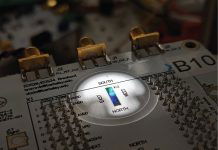
Cancer patients often have many challenges to face, and muscle loss is one of them. This is especially true for patients with head and neck cancer.
Muscle loss, or sarcopenia, can make their treatment journey even more difficult.
But now, thanks to researchers at Dana-Farber Cancer Institute, a new way to detect this problem has been found using artificial intelligence (AI).
Why Muscle Loss Matters in Cancer
Head and neck cancer treatments are tough. They can involve surgery, radiation, and chemotherapy. While these treatments can help get rid of the cancer, they can also cause side effects.
One big problem is that patients might have a hard time eating and drinking. This can lead to weight loss and, more specifically, loss of muscle.
Benjamin Kann, MD, a main doctor in this study, mentioned that muscle mass is crucial. Patients with more muscle are generally healthier.
When a patient loses muscle, it could mean they need more help or that they might not do as well in their treatment.
Until now, doctors used special scans called CT scans to check muscle loss. But these scans weren’t easy to read.
It took a lot of time for an expert to go through each scan and identify the muscle. Dr. Kann said it’s a long process, so it’s not done often.
How AI Helps Spot Muscle Loss Quickly
The team of researchers thought that AI could be the answer. They used a kind of AI called deep learning to teach a computer to find muscle loss in the CT scans.
They used many scans from cancer patients and had experts mark where the muscle was in each one. With this information, the AI learned to do the same job.
The good news is that the AI did it very well. It could tell where the muscle was almost every time. And it did this super fast – in just about 0.15 seconds for each scan!
The team also found something else. They used to check health by looking at body weight and height, which gives a number called BMI. But this number doesn’t show if the weight is from muscle or fat.
The new AI tool, on the other hand, looks at the muscle directly. It seems to be better at predicting how a patient might do during treatment.
What This Means for Patients
The new AI tool offers hope. If doctors see muscle loss early on, they can do something about it. They could give the patient more food, medicines, or even exercises to help.
Also, the tool might help in deciding the treatment plan. For example, if a patient has a lot of muscle loss right at the start, maybe a milder treatment would be better.
Dr. Kann and his team are not stopping here. They want to use the AI tool even more. They plan to keep checking patients with it during their treatment. This way, they can see how the muscle changes and what helps best.
In the end, this AI tool is a new friend for doctors and patients. It offers a quick way to spot problems and might help make the cancer journey a bit easier for many.
If you care about muscle, please read studies about factors that can cause muscle weakness in older people, and scientists find a way to reverse high blood sugar and muscle loss.
For more information about health, please see recent studies about an easy, cheap way to maintain muscles, and results showing these vegetables essential for your muscle strength.
The study was published in JAMA Network Open.
Follow us on Twitter for more articles about this topic.
Copyright © 2023 Knowridge Science Report. All rights reserved.



